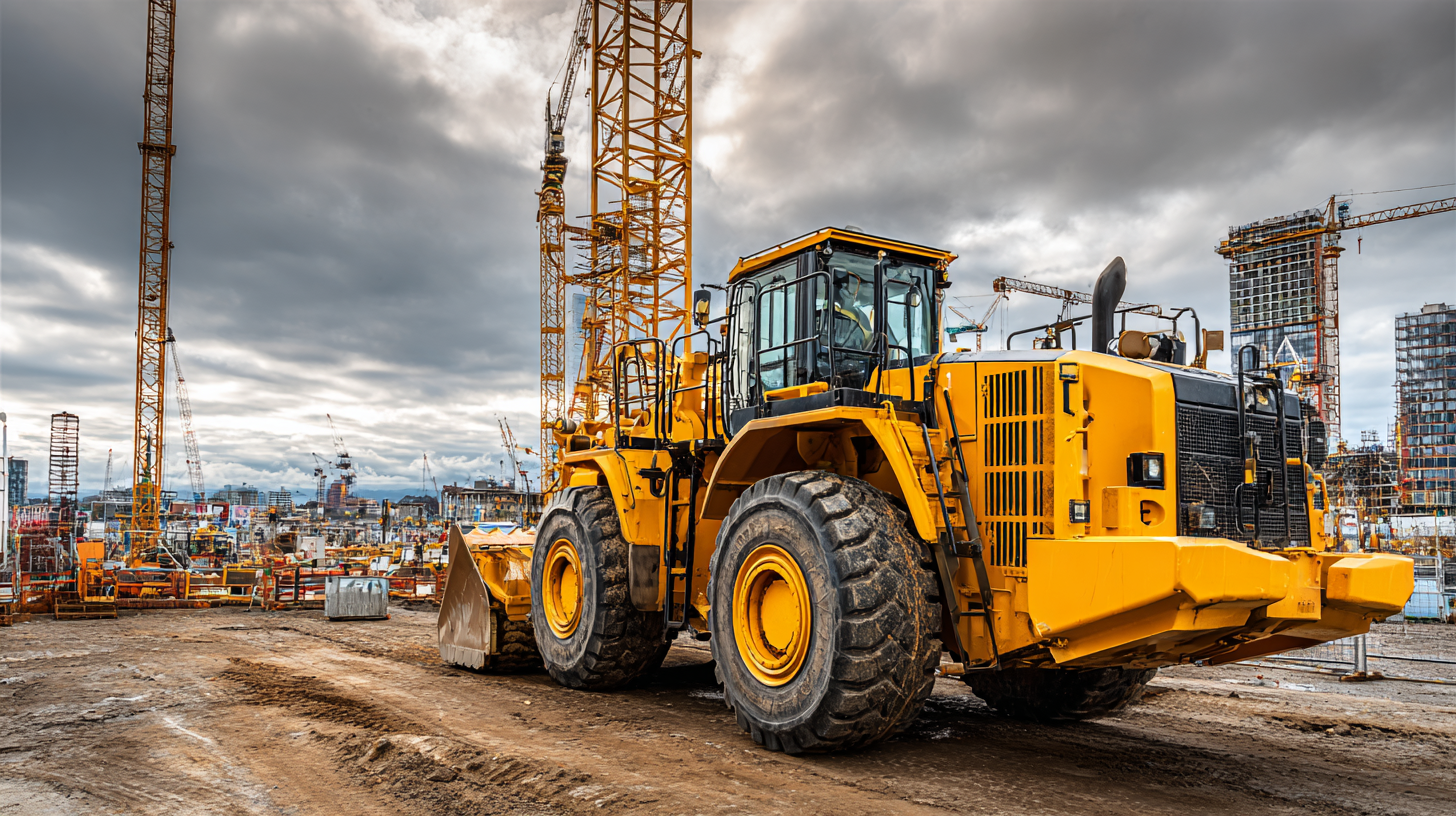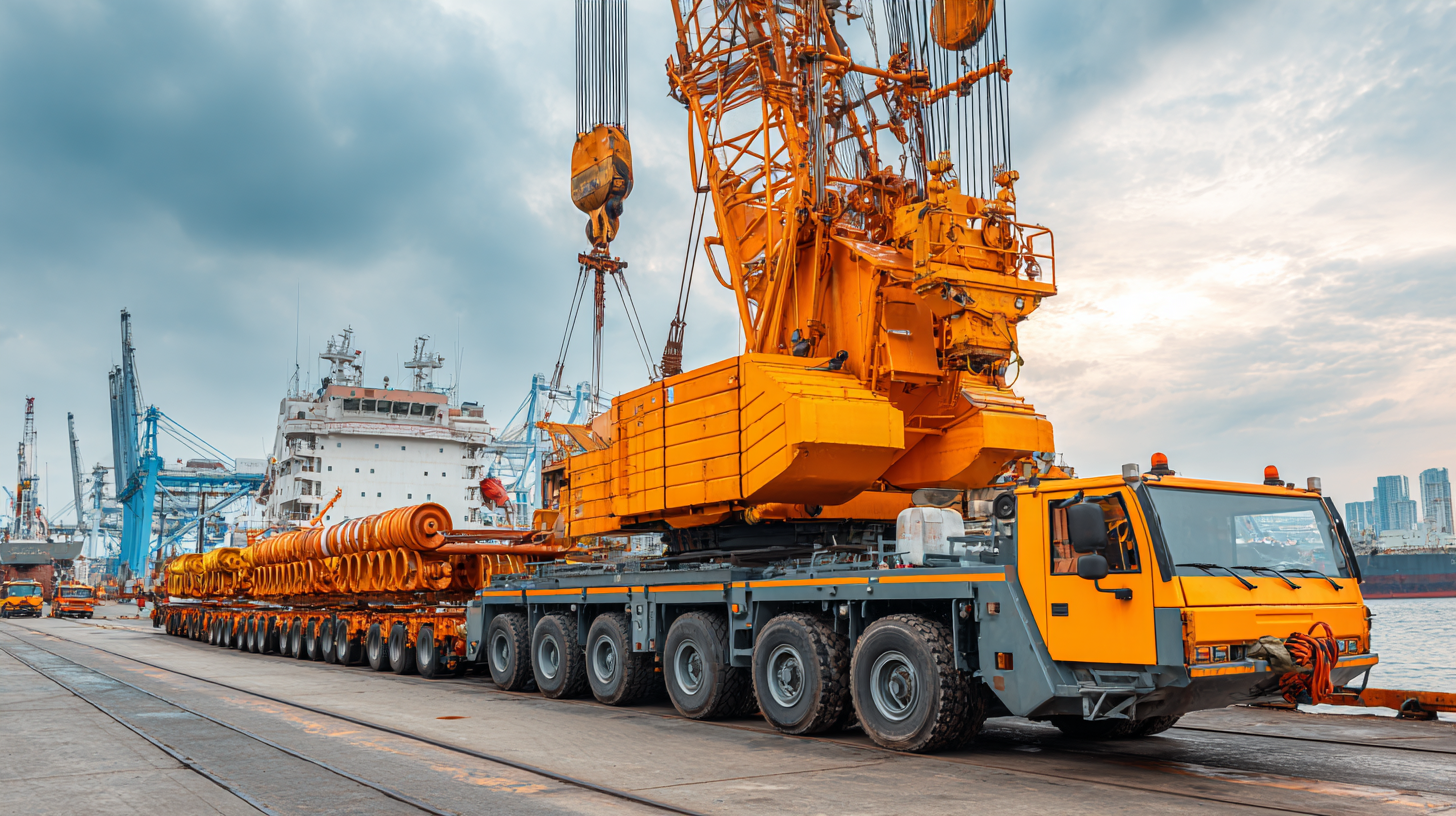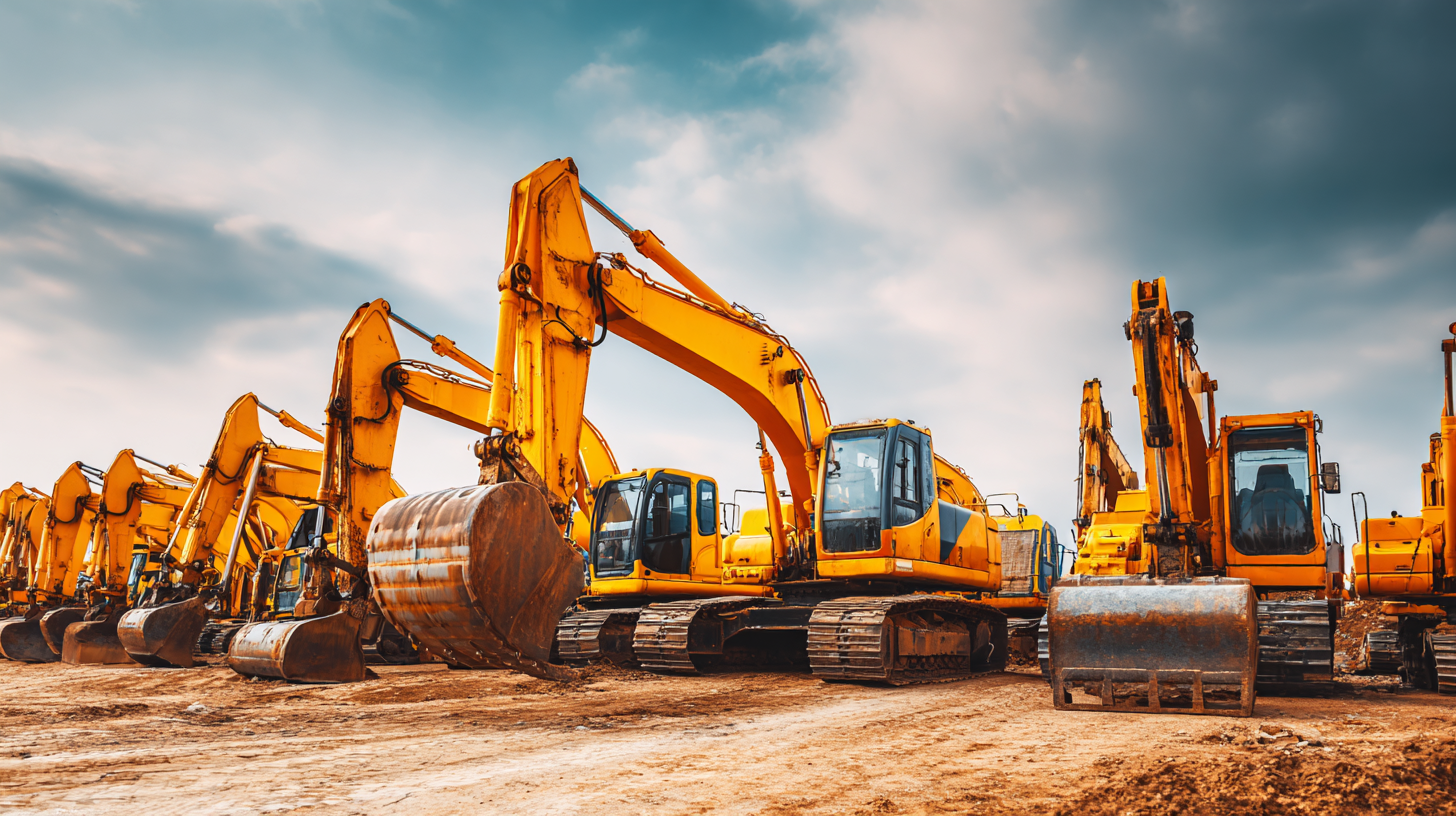Blog
Understanding Challenges with Best Heavy Construction Equipment Sourcing
 In the rapidly evolving construction industry, sourcing heavy construction equipment effectively presents a significant challenge for project managers and procurement teams. According to a report by IBISWorld, the heavy construction equipment industry is projected to reach $48 billion by 2025, highlighting the increasing demand for high-quality machinery. However, as the market grows, so do complexities such as fluctuating prices, supply chain disruptions, and the need for advanced technology integration. The construction sector must navigate these obstacles while ensuring they acquire reliable and efficient equipment to meet project timelines and budgets. Understanding these challenges is crucial for stakeholders aiming to optimize their sourcing strategies and enhance overall project performance in this competitive landscape.
In the rapidly evolving construction industry, sourcing heavy construction equipment effectively presents a significant challenge for project managers and procurement teams. According to a report by IBISWorld, the heavy construction equipment industry is projected to reach $48 billion by 2025, highlighting the increasing demand for high-quality machinery. However, as the market grows, so do complexities such as fluctuating prices, supply chain disruptions, and the need for advanced technology integration. The construction sector must navigate these obstacles while ensuring they acquire reliable and efficient equipment to meet project timelines and budgets. Understanding these challenges is crucial for stakeholders aiming to optimize their sourcing strategies and enhance overall project performance in this competitive landscape.
Identifying Key Challenges in Heavy Construction Equipment Sourcing
Heavy construction equipment sourcing presents several challenges that industry stakeholders must navigate. One of the key challenges is accurately estimating costs, which can vary significantly based on geolocation and the specific characteristics of the machinery required for different fields of activity. Recent advancements in machine learning methods have begun to address this issue, providing a systematic approach to forecasting machinery costs tailored to specific project needs. Such methodologies enhance decision-making processes, enabling companies to allocate resources more efficiently and manage budgets more effectively.
Additionally, the construction industry's push towards sustainable practices introduces further complexities in equipment sourcing. As companies increasingly adopt automation and artificial intelligence to streamline operations, there's a growing need for equipment that aligns with these innovative approaches. This evolution necessitates a shift in sourcing strategies to prioritize not only functionality and cost but also the environmental impact of the machinery. Ultimately, as the heavy construction landscape continues to evolve, firms must remain agile, adapting their sourcing strategies to address both financial pressures and the demand for sustainable solutions.
Understanding Challenges with Best Heavy Construction Equipment Sourcing - Identifying Key Challenges in Heavy Construction Equipment Sourcing
| Challenge | Description | Impact Level (1-5) | Possible Solutions |
|---|---|---|---|
| Supply Chain Disruptions | Delays in the delivery of essential equipment due to global supply chain issues. | 5 | Establish relationships with multiple suppliers; stockpile essential parts. |
| High Costs | Rising prices for new equipment and maintenance. | 4 | Consider leasing equipment; invest in used machinery. |
| Regulatory Compliance | Keeping up with regulations concerning safety and emissions. | 4 | Regular training for staff; consulting legal experts. |
| Technological Changes | Rapid advancements making older equipment less efficient. | 3 | Invest in training; update equipment steadily. |
| Skills Gap | Lack of qualified operators for specialized equipment. | 5 | Implement training programs; collaborate with technical schools. |
Evaluating Supplier Reliability and Equipment Quality
When sourcing heavy construction equipment, evaluating supplier reliability and equipment quality is paramount. Reliable suppliers not only deliver the necessary machinery but also ensure that it meets industry standards. Begin by assessing suppliers through reviews, references, and their history of fulfilling contracts on time. Engage in discussions about their warranty policies and post-sale support, as these can reflect their commitment to reliability.
**Tip:** Always consider a supplier's responsiveness to inquiries. A quick and professional response can indicate their commitment to customer service.
Quality of equipment is equally crucial. Examine the machinery for signs of wear and tear, and request maintenance records to understand its operational history. Conducting hands-on inspections or arranging for third-party evaluations can also help in making informed decisions.
**Tip:** Prioritize suppliers that provide certifications or quality assurance documentation, as this adds another layer of confidence in your procurement process.

Understanding the Cost Factors in Heavy Equipment Procurement
When procuring heavy construction equipment, understanding the cost factors involved is critical to making informed purchasing decisions. A report from the Equipment Leasing and Rental Association (ELRA) indicates that equipment costs can vary significantly based on the type, age, and condition of the machinery. For instance, new equipment can range from $200,000 for a compact excavator to over $1 million for large bulldozers, which highlights the financial commitment required for such investments.
Moreover, ancillary costs, such as maintenance and insurance, can increase the total expenditure. According to a study by the National Association of Heavy Equipment Training Schools (NAHETS), approximately 15-20% of the initial procurement cost can be attributed to these ongoing operational expenses. Additionally, fluctuating materials prices and supply chain challenges can impact availability and pricing, leading to unexpected budget overruns. As such, companies must factor in both immediate and long-term costs when evaluating their heavy equipment procurement strategies to avoid financial pitfalls and ensure operational efficiency.
Understanding Cost Factors in Heavy Equipment Procurement
Navigating Industry Regulations and Compliance Standards
Navigating industry regulations and compliance standards has become a crucial aspect for businesses involved in heavy construction equipment sourcing. As we approach 2025, organizations must adapt to evolving data legislation trends, particularly in relation to personal information protection. Data compliance is not merely a legal obligation but a significant factor in maintaining consumer trust and industry integrity. Reports indicate that over 70% of enterprises are already evaluating their compliance strategies to align with these new standards, which are expected to be implemented by the end of 2024.
In the context of the automotive industry, the rise of smart cars and autonomous driving technologies demands a heightened focus on data management. The development of these technologies has led to an increase in compliance challenges, particularly regarding data exported from smart vehicles. A recent report highlights that by 2025, approximately 50% of new vehicle sales in China are expected to involve some level of autonomy, amplifying the need for rigorous compliance frameworks. Companies are urged to investigate successful industry cases, such as effective data policies from leading tech firms, to better understand how to fulfill their data compliance obligations while leveraging technology for growth.
Leveraging Technology for Efficient Equipment Sourcing Strategies
 In the realm of heavy construction, efficient sourcing of equipment can significantly influence project timelines and budgets. Traditionally, sourcing heavy construction equipment involved cumbersome processes, including manual selection and reliance on numerous vendors. However, advancements in technology are transforming these practices, enabling construction businesses to adopt more strategic and efficient sourcing methods.
In the realm of heavy construction, efficient sourcing of equipment can significantly influence project timelines and budgets. Traditionally, sourcing heavy construction equipment involved cumbersome processes, including manual selection and reliance on numerous vendors. However, advancements in technology are transforming these practices, enabling construction businesses to adopt more strategic and efficient sourcing methods.
Leveraging technology, companies can utilize specialized software and online platforms to streamline the equipment sourcing process. These tools provide access to real-time data on equipment availability, pricing, and performance reviews, empowering decision-makers to make more informed choices. Furthermore, the integration of machine learning and data analytics can predict usage patterns and optimize procurement strategies, ensuring that the right tools are available at the right time without unnecessary expenditure.
Additionally, incorporating technologies such as RFID tracking and IoT sensors allows for better inventory management and equipment monitoring. This not only enhances operational efficiency but also minimizes the risks associated with equipment downtime and maintenance issues. By embracing these technological solutions, construction firms can navigate the complexities of sourcing heavy equipment more effectively, leading to improved project outcomes and a competitive edge in the industry.
